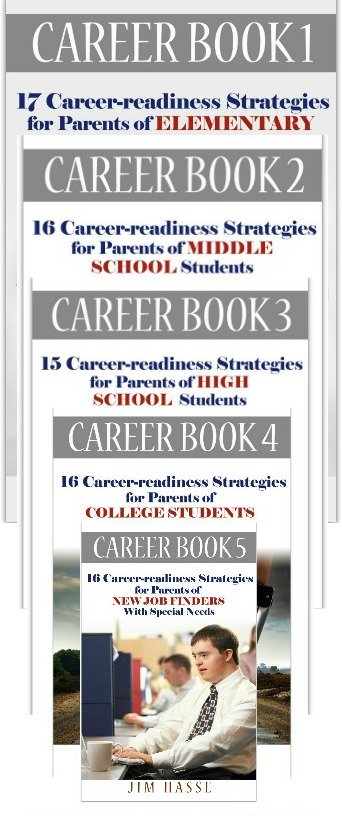Leadership Style: Cerebral Palsy CareerBuilder for College Students
By Jim Hasse, ABC, GCDF, Disability Employment Expert
_________________________________________________________
One
of the marks of leadership style is how flexible your college student with
cerebral palsy (CP) is in working with people to effectively get a job done as
an employee, coworker or supervisor. For me, that flexibility means knowing
when to step up, when to step aside and when to step down on the job for the
benefit of the corporate endeavor.
As a hiring manager, I want to know that job seeker
has the self-confidence, self-knowledge and social intelligence to first think
about the general good of the work group instead of a particular
self-interest.
That’s not especially easy to pull off, especially in
today’s American society, which rewards individual initiative and discounts
company loyalty as career building attributes. First thinking of the general
good was also once a mark of statesmanship and coveted form of leadership style,
but the global stage is now populated with political and business figures who
don’t know how to step up, step aside or even step down.
This leadership style issue of serving the greater good through
temporarily suspending your self-interest gets even more complicated when you
have a disability. Consider these questions:
- When is it constructive for an employee with CP to
step up, step aside or step down?
- How do you decide when your CP is limiting your
flexibility to serve the greater good?
- When are you being too passive and feeding into
stereotypes your supervisor or coworkers may have about people with
disabilities?
- When does such a move discount you instead of reward you as an individual? When does it show you as a strong leader instead of a weak link?
Let’s address these questions by citing concrete situations which you can pass along to the college student you’re mentoring.
Here are some personal stories I would be prepared to tell during job interviews to illustrate my self-confidence, self-knowledge, social intelligence and dedication -- key attributes in the leadership style hiring managers seek in today’s job candidates.

Stepping up: Volunteer to take a pay
cut
At one point in my career, I volunteered to take a 60-percent cut in my salary to save my job at a non-profit. It was the right thing to do at the time because funding was not forthcoming and I was one of the highest paid members of the small full-time staff.
Looking back, it turned out to be good decision. The non-profit survived five more years, and I ended up working full-time as its employee for another year and then as an independent contractor for the agency during another four years.
When has your youngster
identified
what a barrier looks like
from the perspective of others?
Join PACER’s Facebook
discussion.
In that instance, I had the financial resources to take the pay cut. I gained credibility among coworkers and board members by stepping up to help the non-profit deal with its financial crisis and achieve some of its immediate key objectives.
Stepping aside: Grant
exceptional authority to staff
About 15 years into my
career, I made the transition from “doer” to managing my team of staff members
who carried out the “doer” work. I learned how to develop job descriptions,
conduct evaluations and delegate authority to individuals on my team based on
their unique capabilities.
As a person with cerebral palsy, I talk and walk with
difficulty. So, during a 24-year span, I had an opportunity to refine my team
of “doers” and attracted some of the most accomplished individuals in corporate
communications (about 36 professionals in all) by offering them the opportunity
to gain recognition of their efforts (tasks I could not do as well) while I
stayed in the background as a people manager.
In short, I developed my own leadership style.
Stepping down: Develop a new career in a new field
Reporting to our CEO as
vice president of corporate communication, I could finally see the end game of
more than 20 years of mergers within the Midwest
dairy industry: a consolidation of three large dairy processors (including our
own).
Our CEO was spear-heading this final round of
restructuring across five states, and I knew he had a problem. He needed slots
in his top-management team for the CEOs of the other two organizations, and
corporate communications (administered by someone who could not speak very well
due to cerebral palsy) and human resources (a recently developed function) were
the most obvious slots.
He admitted that the upcoming two years would
be rough and offered me the opportunity to create any job for myself within the
upper management structure at a generous compensation package, if I would step
aside and let one my trusted staff members take over temporarily as vice
president during the transition period.
I tried to introduce an organizational development
function within the company but decided to retire after a year to start my own
business because I realized my services were more needed elsewhere --- in the
field of disability employment. And, an additional year later, the expected
consolidation fell into place, and corporate communication merged with human
resources under one vice president.
It was a good 28-year ride for me within one
organization, but, with my disability, I realized I could not compete for a key
position that was targeted by so many other heavy hitters. Instead, I stepped
down and over another two decades of work reinvented myself into a disability
employment expert (anchored, of course, in my original leadership style).
What you can do
As a
job seeker, your college student mentee may have similar stories which could
come in handy during job interviews when he or she needs to prove levels of maturity,
trustworthiness, dedication -- and a lack of self-centeredness -- to a
prospective supervisor.
That supervisor is probably asking in the back of his
or her mind:
- Is
this candidate realistic about the limitations disability may have in the job
at hand?
- Is
this person willing to not only serve the corporate good but also accommodate
to the realities of the job and of personal limitations?
- Is this person going to require more of my time and effort than usual in helping him or her adjust to the changing realities of the job?
Urge your college student to tell brief stories about his or her previous experiences which address those concerns about leadership style.
Remember, such stories can stem from not only previous work experience but also volunteer positions as well as interactions with caregivers and experiences while in college.
Such
stories can be powerful in illustrating your mentee’s leadership style.
When has your youngster
identified
what a barrier looks like
from the perspective of others?
Join PACER’s Facebook
discussion.
Return
from Leadership Style to Interview Tips
Go to Cerebral Palsy Career Builders
This is Creative Commons content. You can freely and legally use, share and repurpose it for non-commercial purposes only, provided you attach this sentence and the following attribution to it (including the two links):
Originally written and illustrated by Jim Hasse, ABC, GCDF, owner of Hasse Communication Counseling, LLC, who, as a person with cerebral palsy, served for 10 years as a vice president in a Fortune 500 company during his 29-year career in corporate communication. He’s an Accredited Business Communicator, certified as a Global Career Development Facilitator and author of 14 Amazon books about disability awareness and disability employment issues.





